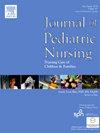社交媒体成瘾、无社交恐惧症和青少年社交焦虑:一个中介分析
IF 2.3
4区 医学
Q2 NURSING
Journal of Pediatric Nursing-Nursing Care of Children & Families
Pub Date : 2025-07-16
DOI:10.1016/j.pedn.2025.07.008
引用次数: 0
摘要
恐同症是一个日益严重的公共卫生问题,影响着青少年的身体、认知和社会心理健康。社交焦虑和社交媒体成瘾是加剧无网络恐惧症行为的两个重要因素。本研究旨在探讨社交焦虑在青少年社交媒体成瘾与无网络恐惧症之间的中介作用。设计与方法进行了横断面设计。这项研究是在1724名青少年中完成的。数据通过《个人信息表》、《无网络恐惧症问卷》、《青少年社交焦虑量表》和《社交媒体成瘾量表》收集。通过过程宏观模型4 (Process Macro Model 4)对直接效应和间接效应进行估计,验证其中介作用。结果半数以上(62.8%)的青少年存在中度至极端的网络恐惧症行为,三分之一(32%)的青少年存在社交媒体成瘾,多数青少年的社交焦虑水平为中等(平均43.40)。研究发现,社交焦虑在社交媒体成瘾和无网络恐惧症之间的关系中起间接中介作用(12.4%)。结论社交焦虑对社交媒体成瘾和无网络恐惧症的影响具有部分中介作用。实践启示护士可以通过考虑社交媒体成瘾的影响和社交焦虑在减少青少年无网络恐惧症中的中介作用来制定实用的策略,如同伴支持计划、父母意识计划。护士可以设计情绪调节增强方案,并鼓励他们参加体育或艺术活动,以改善同伴互动。本文章由计算机程序翻译,如有差异,请以英文原文为准。
Social media addiction, nomophobia, and social anxiety among adolescents: A mediation analysis
Purpose
Nomophobia is an increasing public health problem affecting the physical, cognitive, and psychosocial health of adolescents. Social anxiety and social media addiction are two significant concerns that can exacerbate nomophobia behaviors. The present study aimed to investigate the mediating role of social anxiety in the relationship between social media addiction and nomophobia among adolescents.
Design and methods
A cross-sectional design was conducted. The study was completed with 1724 adolescents. Data were collected via Personal Information Form, the Nomophobia Questionnaire, the Social Anxiety Scale for Adolescents, and the Social Media Addiction Scale. Process Macro Model 4, which can estimate direct and indirect effects, was conducted to verify the mediating role.
Results
More than half of the adolescents (62.8 %) had moderate to extreme levels of nomophobia behaviors, one in three adolescents was addicted to social media (32 %), and the level of social anxiety perceived by the majority was medium (mean = 43.40). The study found an indirect mediating role of social anxiety (12.4 %) in the relationship between social media addiction and nomophobia.
Conclusion
This study concluded that social anxiety has a partial mediating role in the effect of social media addiction and nomophobia.
Practice implications
Nurses could develop practical strategies, such as peer support programs, parental awareness programs by considering the impact of social media addiction and the mediating role of social anxiety in decreasing nomophobia in adolescents. Nurses could design emotion regulation enhancement programs, and encourage them to participate in sportive or artistic activities to improve peer interactions.
求助全文
通过发布文献求助,成功后即可免费获取论文全文。
去求助
来源期刊

Journal of Pediatric Nursing-Nursing Care of Children & Families
NURSING-PEDIATRICS
CiteScore
3.70
自引率
8.30%
发文量
291
审稿时长
65 days
期刊介绍:
Official Journal of the Society of Pediatric Nurses and the Pediatric Endocrinology Nursing Society (PENS)
The Journal of Pediatric Nursing: Nursing Care of Children and Families (JPN) is interested in publishing evidence-based practice, quality improvement, theory, and research papers on a variety of topics from US and international authors. JPN is the official journal of the Society of Pediatric Nurses and the Pediatric Endocrinology Nursing Society. Cecily L. Betz, PhD, RN, FAAN is the Founder and Editor in Chief.
Journal content covers the life span from birth to adolescence. Submissions should be pertinent to the nursing care needs of healthy and ill infants, children, and adolescents, addressing their biopsychosocial needs. JPN also features the following regular columns for which authors may submit brief papers: Hot Topics and Technology.
 求助内容:
求助内容: 应助结果提醒方式:
应助结果提醒方式:


